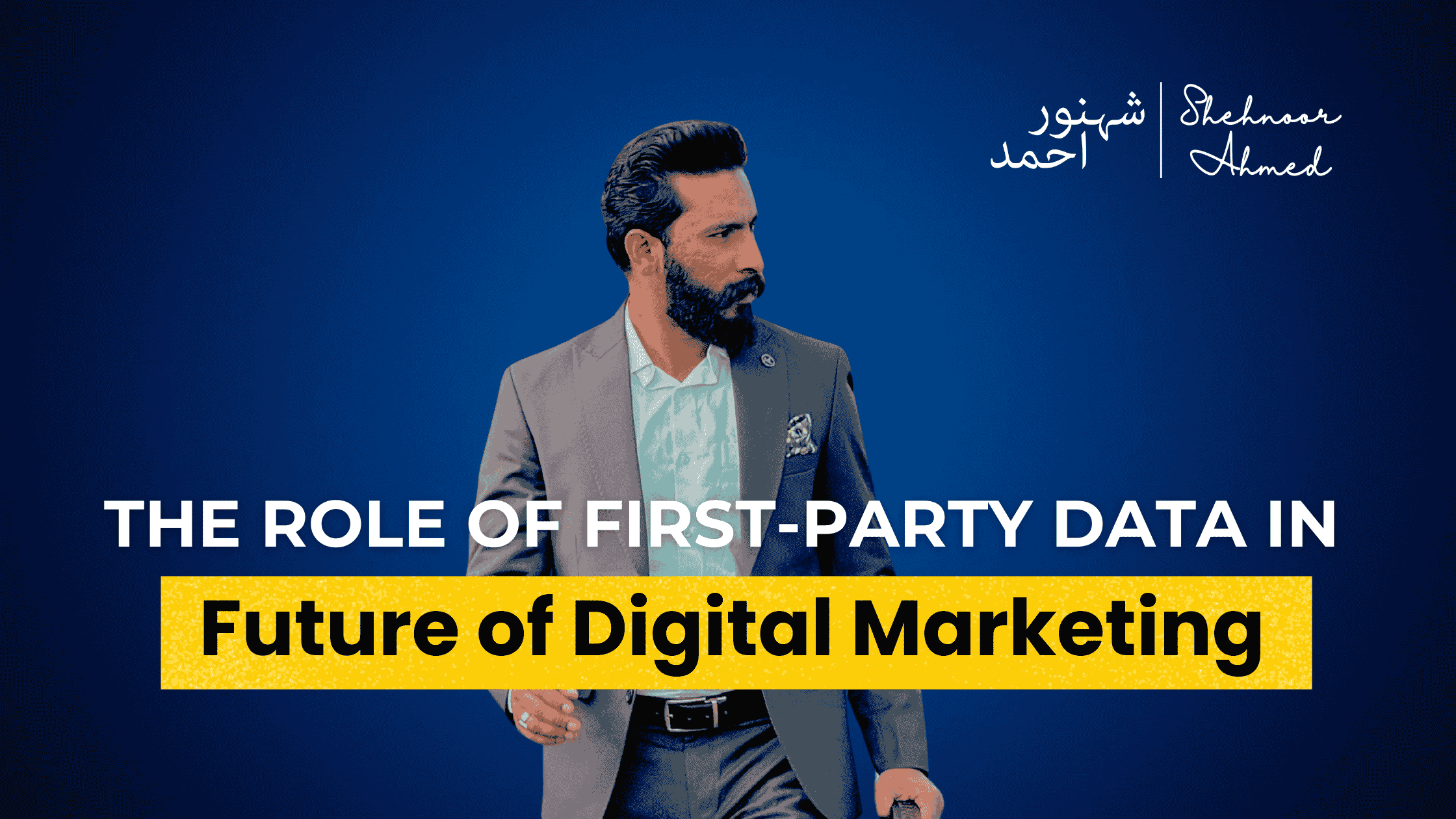
The Role of First-Party Data in the Future of Digital Marketing
Online advertising has been relying on third-party cookies for over a decade. These tiny trackers allowed brands to track individuals across the internet, learn about them, and present them with ads with laser-like precision. All that’s changed now. With privacy taking center stage, regulators and technology giants alike are shutting the book on tracking through cookies. This leaves one large question for all businesses: what’s next? The answer is simple: first-party data. Rather than leasing data from third parties, the future rests with companies that construct their own data directly from customers. At Shehnoor Ahmed, we believe that it is an opportunity rather than a loss. Companies that adopt first-party data will not only be evolving in the new digital age but will also have more robust, more reliable relationships with their audience. Why Third-Party Cookies Are Disappearing Let’s be realistic, cookies were due their time. They enabled marketers to monitor user activity on websites for years. However, this system was not designed with transparency in sight. The majority of users never truly knew how their data was gathered or distributed, and eventually, the distrust came back to haunt them. All this means one thing: businesses can no longer depend on someone else’s data. You must own your data, and that begins with creating a solid first-party data strategy. What Exactly Is First-Party Data? First-party data is data that originates directly from your customers. It’s information individuals volunteer to you when they engage with your brand. It’s the digital equivalent of a handshake it’s trust-based and permissioned. Examples: Since this information is collected directly from the source, it’s more correct, credible, and precious than any cookie-based platform. Also read: Building a Digital Marketing Career Without Paid Courses Why First-Party Data Is a Goldmine There are some explanations first-party data is rapidly turning into the pillar of digital marketing: Overall, first-party data provides you with clarity and control. Rather than pursuing anonymous users online, you’re creating authentic relationships. How Businesses Can Build Stronger Data Assets So, where do you start? It’s not a matter of having the biggest tech stack. It’s about building valuable exchanges where people actually want to give away their details. Here are some real-life steps: 1. Provide Value in Return No one gives information away for nothing. If you want someone’s email, give them something of value back perhaps a discount, a free report, or early access to new products. 2. Get Your Website to Work Harder Your site needs to be more than an online brochure. Use chat tools, gated content, and forms to get insights. Each little interaction is an opportunity to gather data you truly own. 3. Emphasize Email and SMS Email and SMS marketing are still extremely powerful when approached correctly. Build lists by way of organic sign-up, then send targeted messages that feel personalized rather than mass blasts. 4. Operate Loyalty Programs A well-designed rewards system promotes repeat business and provides you with a clear view into the behavior of your customers. Each earned point or item redeemed contributes another dimension to your data set. 5. Seek Feedback Occasionally the simplest method to discover what your audience is thinking is to ask. Rapid surveys, polls, and comments not only give insights but also demonstrate to customers that you value their opinion. Turning Data Into Action Gathering data is half the fight. The real benefit lies in leveraging it. Here’s what you can do with first-party insights: This sort of personalization is difficult to do with third-party data but becomes second nature with first-party insights. Looking Ahead: The Future of Digital Marketing The cookie-less future isn’t the end of digital marketing it’s the start of something better. Organizations that are built on rented data will be fighting a losing battle. But those that invest in establishing first-party data pipelines will prosper. The future is for brands that behave like owners, not renters, of their customer relationships. First-party data makes that a reality. It minimizes reliance on external platforms, fosters long-term loyalty, and enables smarter marketing choices. Final Thoughts The digital era is evolving, and the game is being rewritten. Third-party cookies are declining, but first-party data is opening doors to more genuine, reliable, and effective marketing. At Shehnoor Ahmed, we guide companies into this future through strategies centered on trust and personalization. The earlier you adopt first-party data, the more resilient your brand will be tomorrow.



